
Connect Plus / Case studies
Enhancing our environment
Species focused ecology projects
This year we have delivered species-focused ecology projects around the network for several species, this has included plot enhancements, planting of herbaceous plants, installation of nest boxes and surveying for nationally scarce/rare species.
In the summer of 2023, we undertook regular surveys of the land below the Dartford Bridge focussing on rare bee species, particularly the endangered Shrill Carder Bee. In August we were pleased to be accompanied by a representative from the Bumblebee Conservation Trust, and whilst we didn’t find any bees during the survey, Bumblebee Conservation confirmed the site was ideal habitat and, because of recordings in surrounding areas, it was highly likely the Shrill Carder was present there. The Trust will be assisting us as we continue to survey the site throughout the year.
Despite not seeing the Shrill Carder Bee, we did record several scarce species of solitary and social Bee over the summer at this site, affirming the site’s biodiversity.
These included:
- Moss Carder Bee (Bombus muscorum) - Nationally Rare
- Brown-banded Carder Bee (Bombus humilis) - Nationally Rare
- Pantaloon Bee (Dasypoda altercator) - Nationally Scarce
- Silvery Leaf-cutter Bee (Megachile leachella) - Nationally Scarce
Additionally, this year saw diligent monitoring of our Small Blue (Cupido minimus) butterfly site, located within a balancing pond site between junctions 22 and 21a on the M25. Despite initial setbacks with Kidney Vetch planting in 2022, we have now replanted with larger, sturdier plants. Kidney vetch is the only larval food plant of the near-threatened small blue, the smallest butterfly in the UK and it is incredibly important that we continue with our work to attract them to the site.
At junction 16 on the M25, our focus shifted to creating habitat for the Striped Lychnis Moth, in the UK Biodiversity Action Plan as a priority species and as Nationally Scarce A. It is only found in Oxfordshire, Buckinghamshire, Berkshire, Hampshire, West Sussex and, recently, a single sighting in Wiltshire. The nearest colony to our site is six miles to the North.
Despite initial challenges such as premature mowing in 2023, we replanted Dark Mullein, it’s only larval food plant, and implemented protective measures to ensure the survival of this rare moth species. Later this year we’ll inspect the flower spikes for the stripey larvae.
In Dartford, our initiative to plant Marsh Mallow Plants aimed to create suitable habitat for the Red Data Book species, the Marsh Mallow Moth. This moth is one of the UKs rarest and is found at only a limited number of sites in Southeast Essex and Kent. With an abundance of its only larval food plant, we remain optimistic about attracting this rare moth to the site.

We also enhanced the biodiversity of a woodland area and ditch within an off-network adjacent area, close to J11. The woodland is close to a canal and, as it is damp year-round, we’ve planted wetland herbs, sedges and rushes close to the ditch area. These species will both enhance diversity and, potentially, suppress Bramble growth making inspections easier and safer. In addition to felling the invasive Cherry Laurel, we also thinned the wet woodland and planted trees that were more suitable to this habitat, such as Alder Buckthorn and Elder.
These enhancements should also support the declining Downy Emerald Dragonfly (Cordulia aenea), which has been recorded nearby. In the drier areas at the woodland edges, we have planted Common Dog Violets (Viola riviniana), the only larval food plant of the silver-washed fritillary (Argynnis paphia).
To assess moth populations at our improvement sites, we have invested in a moth trap. The trap works by attracting the moth via light, which then falls into a gap at the top of the trap and settles in amongst egg cartons placed within. The following morning, we open the trap and record the moths or any other insects, before safely releasing them, unharmed.
We've implemented a recording system for invertebrates on our GIS platform and are currently expanding it to include a dedicated layer for moth trapping records, and a botanical survey recording system. Anticipating comprehensive data collection, we expect to document over 300 moth species across our network throughout the year.
We've strategically positioned five Kestrel (Falco tinnunculus) nesting boxes across our network, carefully selecting locations with rough grassland ideal for these birds to hunt small rodents. As the year progresses, we'll closely monitor these sites, with the hope of seeing some fledglings later in the year. Our chosen locations include:
- A1M – J4-5
- M25 J28
- M25 J20-21a
- M25 J22-21a
- M23
Additionally, at the M25 J11 enhancement site, we've installed 15 smaller nest boxes, with five specifically designed to accommodate Tree Creepers (Certhia familiaris), further enriching the habitat diversity and supporting avian biodiversity in the area.

Social value work
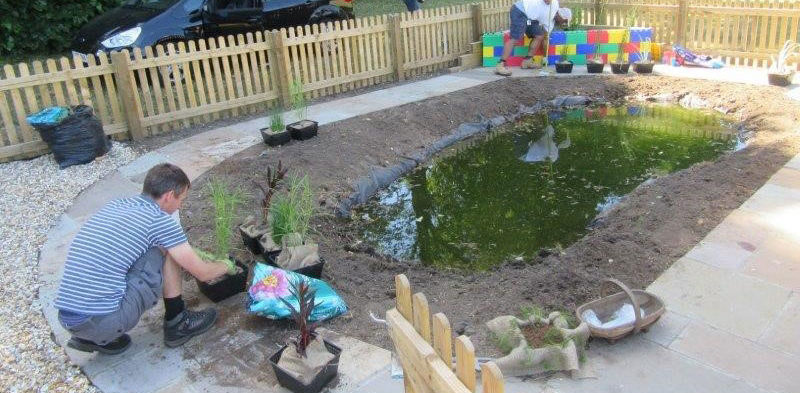
We recognise that interaction with our customers typically results from incidents on the network, congestion or roadworks associated with our schemes
Connect Plus / Case studies
Adopt a School
Executive Summary
Our community engagement initiative Adopt a School continues to be at the heart of our corporate responsibility programme. By working with local schools we engage with children to promote the industry as a future career choice, raise awareness of our road activities and campaigns (road safety, biodiversity, litter and more) and utilise our skills to build improvements to their facilities.
Each school has been nominated by Connect Plus Services or Connect Plus staff and they tend to be based close to one of the offices or depots around the network. This constructive contribution is strengthening community relationships and positively impacting on important issues from road safety and biodiversity, to inclusion and STEM (Science, Technology, Engineering and Mathematics) awareness.
Aims & Objectives
Adopt a School’s objective is to create a positive impact on the areas in which we operate and hence, improve relationships with our customers. Through this initiative, we’re engaging with our communities in a positive and proactive way, enabling us to explain more about the work we do, how we do it, and the importance of keeping the road network operating safely 24/7/365. It also helps us showcase our commitment to minimising negative impacts of our work on the environment and society.
This strategy also aligns with the work being undertaken across the industry to close the skills gap, by engaging young people and positioning construction as a career of choice.
Solution
We have continued to work with our adopted schools because we understand the importance of an engagement programme that genuinely invests in the next generation. We identify areas where our skills, expertise and resources are most beneficial and then develop plans to respond to the needs of these communities, from educational visits which support the schools’ curriculums to built projects around the schools’ grounds.
Key examples of this include Connect Plus Services’ maths club, known as Maths25, which has been launched at the Dartford Bridge School in Kent. Our CPS STEM ambassadors work to make maths fun for pupils at the school. Our CPS Finance Director also joined Maths25 at the end of 2018 for a money management game, where the children were given play money and real-life scenarios to encourage them to plan how best to use their funds.
One of our Environmental Assistants visited The Dartford Bridge Primary School during the school’s Science Week to talk to the Year 6 children about her role and the importance of looking after the environment while operating and maintaining the M25.
Our newly adopted school, Holy Cross Primary School in Thurrock, benefited from a collaborative initiative with contractor R&W. They replaced their old tarmac playground with a new surface that incorporated new sports equipment. Another collaboration with FM Conway helped to clear their blocked gullies.
Children from three of our adopted schools took part in a drawing competition, portraying scenes of traffic management, litter picking and incident support. The winners’ drawings appeared in a children’s book which was professionally printed and distributed to each of the schools. Another stand-out initiative was ‘CPS in Bloom’, where volunteers planted flowers and vegetables to brighten up the adopted schools’ play areas. Each school received a £200 voucher for garden equipment and anything else they wanted for the planting area.

Measuring Success
Each year the interest and engagement from members of staff has increased, and this motivates CPS to continue to support the schools with educational visits and ongoing campaigns.
During CPS in Bloom, we had the support of many employees (office staff and operatives working together) who were keen to use their volunteering days to spend a full day in our schools, planting and clearing the grounds. Whilst it’s difficult to provide tangible figures to evidence the success of these initiatives, the schools’ leadership teams are delighted with the engagement and ongoing relationship with Connect Plus Services and Connect Plus.
Next Steps
The benefits of our corporate social responsibility programme, particularly with Adopt a School, are endless. Through this programme we are meeting and exceeding many of our objectives – improving community engagement; collaborative working with our supply chain partners; increasing staff satisfaction; giving something back to local communities; and leaving a legacy.
Feedback from our adopted schools has encouraged us to continue working to identify how we can add greater value, using the skills, expertise and enthusiasm of our people.

Working on the M25 network can be challenging as road space availability limits the amount of work that can be carried out at any one time. to address this challenge we developed a solution which cuts across all disciplines
Connect Plus / Case studies
Centralised Planning Office
Executive Summary
To address the increased demand for access to the network to undertake works and maintenance activities, we recently identified the need for a Centralised Planning Office, the principle aim of which is to optimise road space use to ensure a free-flowing network.
The Need
-
- A more free-flowing network
- A safe and serviceable network
- Supporting economic growth
Aims & Objectives
This initiative optimises and maximises network availability, leading to a more free-flowing network that supports economic growth.
By encouraging safe operations within multi-occupancy road space work sites and ensuring the timely delivery of maintenance and asset renewal projects, the Central Planning Office will promote a safe and serviceable network that is better integrated with neighbouring networks.
Solution
We have established monthly Collaborative Planning Forums for both the Northern and Southern sections of the network. These forums bring together many of the key stakeholders and provide a platform to discuss future works and identify opportunities where all parties can coordinate more effectively.
We have developed time/route plans for each of the routes on our network. During the forums these are reviewed and discussed by attendees so any potential sharing or clashes can be agreed, and a joint decision can be made regarding what should take priority.

Plan and Progress
In addition to an increase in physical works taking place on the M25 network, there has also been an increase in the number of Abnormal Load Movements, all of which have to be processed to ensure the M25 network is not compromised. During 2017 the total was approximately 42,000, and this rose to 55,000 in 2018. During 2018, CPS recorded 1,949 occasions where activities carried out on the network were coordinated with other works demonstrating the progress begin made.
Measuring Success
Overall the CPO has been a resounding success. Road space is no longer seen as an issue on the M25 and applicants have greatly improved information on all the works that are due to take place. In addition, the opportunities to share traffic management continue to rise.
We’re thrilled that due to its success, Highways England and Area 4 have adopted our methodology for the Kent Corridor Coordination Group.
Next Steps
We will continue to support Highways England in providing accurate information relating to Network closures. This will enable customers to better plan their journeys.
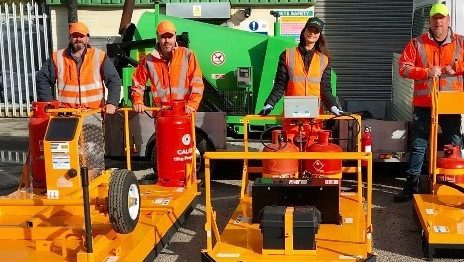
From time to time potholes form in the carriageway and depending on their severity, can potentially become a hazard to the road user. With the introduction of Road Mender, carriageway repairs can now be delivered more efficiently and effectively.
Connect Plus / Case studies
Road Mender
Executive Summary
The Road Mender initiative was developed as the result of a Don’t Walk By (DWB) submission, which is an internal programme we have in place to continually improve our organisation. The DWB submission suggested a more efficient way of carrying out permanent repairs on the carriageway through the use of a mobile and volumetric piece of plant producing good quality Hot-Mix Asphalt for pavement defect repairs in all weather conditions. Following a successful trial period, it has been rolled out across the network.
Aims & Objectives
Previously, the method for carrying out a temporary repair utilised Viafix - a cold material that remains workable in very low temperatures, but hardens like traditional hot asphalt when water is added.
Nevertheless, this requires routine monitoring - which is difficult in a live lane situation. The Road Mender, however, gives us the opportunity to provide a permanent repair.
Solution
Working in this way delivers significant operating efficiencies, performance benefits and minimises impact to the travelling public. We can now implement our own durable, long lasting asphalt hot-mix in the exact quantity needed, at the correct temperature for ideal compaction, directly at the job site with minimal waste and without the need to visit an asphalt plant.
The Road Mender heats a total of 200kg of AC10 asphalt, added in 20kg bags. It’s able to reach its desired temperature in just 8-12 minutes.
Currently one Road Mender serves the whole network out of our Scratchwood depot and is operated by a dedicated and specially trained team. While Viafix continues to be used for safety mitigation, Road Mender is now fully utilised and used for all permanent carriageway repairs.
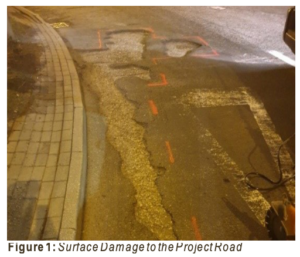
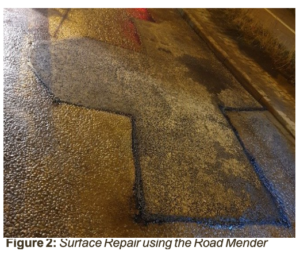
Measuring Success
This is the first Road Mender to cover the whole of the network and within the next few months it will be replaced with two larger, water-cooled Road Menders, operating out of Swanley and Scratchwood Depots. Utilising this process not only gives us a saving of up to 70% on materials, it also gives a reduction in waste and a significant reduction in the exposure to noise, dust, hand-arm vibration syndrome (HAVS), oils and greases.
Working collaboratively with the Roadspace Team to achieve optimum productivity within road closures also results in less disruption to the travelling public.
Feedback
Roadmender won the National Joint Utilities group award for Innovation, The Street Works UK Award for Sustainable Methods and the Utility Week Award for Excellence in Street Works.
Next Steps
We aim to introduce two 350kg 3.5T Road Menders onto the network, together with two 5T Road Mender support vehicles and two infrared heating units that will be brought into routine operations as part of the Road Mender process.
We will also be training four dedicated Road Mender operators and look to improve the availability of Road Mender to the contract. Through further use of Road Mender, we’re working towards the elimination of HAVS, caused by continued use of a pneumatic breaker.
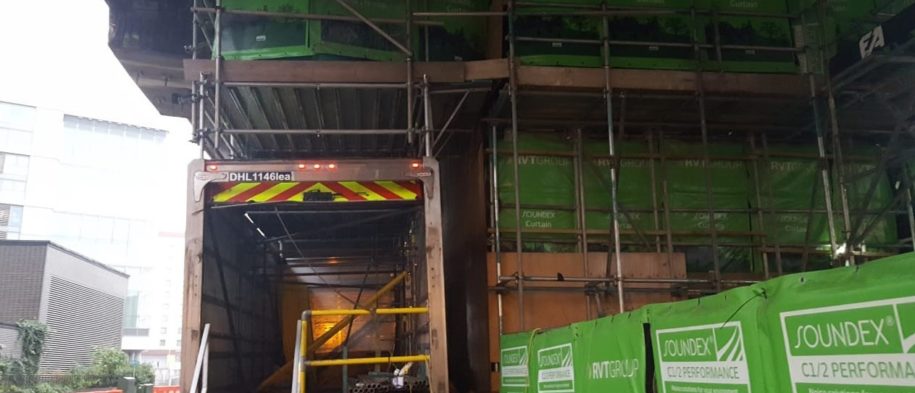
Identifying innovative solutions to reduce the impact of our works on our neighbours
Connect Plus / Case studies
Vehicle Mounted Access Scaffold
Executive Summary
When undertaking concrete repair and refurbishment works to the substructures supporting the M4 elevated section, Connect Plus and Connect Plus services developed an innovative solution to help reduce the issues caused by working in close proximity to local residents and businesses.
The required repair works included the removal and reinstatement of delaminated and poor-quality concrete, together with the installation of cathodic protection. Previous works in this location had identified significant risks, not only due to the scope of works, but because of the proximity of residents which, in some locations, is less than 10m.
One of the aims of this initiative was to reduce the disruption, specifically in regard to noise, that the project caused to local residents.
The Need
It was essential that we found a way to reduce the environmental impacts to local residents and businesses in West London resulting from these essential renewal works.
Solution
We began the offsite trialling of a vehicle-mounted access arrangement, that can be driven into position and erected quickly with full noise and dust suppression. Once the trial was deemed a success, we were able to move the scaffold into position without the need to implement a full road closure, keeping a single lane open to traffic.
We made some slight modifications to the access including the installation of Soundex acoustic curtains, providing full encapsulation at both the tip and root of the crosshead cantilever. Noise levels were continually monitored, and additional blankets were added to close the gaps if required.
Using the access scaffold resulted in a considerable reduction in work-generated noise levels. By fully enclosing the works, they dropped from 93db to 73db during hydro demolition. Further on-site monitoring reduced this again to 70db.
Further improvements and monitoring reduced dB levels to a reading that allowed works to proceed overnight. This significantly reduced the overall duration of the programmed works and, therefore, the impact on the travelling public and local residents. Upon completion of the works, we were able to carry out a full removal of the access.
The innovative vehicle-mounted access scaffold is also more sturdy and therefore safer for our road workers than the mobile elevated working platform traditionally used for this type of work.

Plan and Progress
We’ve worked together with Highways England who have been involved throughout the project, including during the trial process.
Design and timing records for the vehicle mounted access scaffold have been made available to other contractors for Early Contractor Involvement (ECI) in upcoming works planning.
Measuring Success
Using the vehicle-mounted access scaffold led to a reduction of overall noise levels. These levels meet section 61 allowable values.
| Day | 07:00 – 19:00 | 79Db(A) |
| Evening | 19:00 – 23:00 | 77 dB(A) |
| Night | 23:00 – 07:00 | 73 dB(A) |
Next Steps
This innovative approach will be rolled out to similar projects in the future, with Jackson’s already planning to use the same method for their upcoming works on the M4.

It is estimated that 1 in 10 of the male suicides in the UK list their occupation as in the construction industry.
Connect Plus / Case studies
Wheel of Wellbeing
Executive summary
We often shout about safety, but whisper about health and wellbeing. We hope to change that with an industry-leading approach.
Gade Valley is a technically complex long-term maintenance project with teams working away from home over several years. The teams undertake intricate and highly specialised technical work, including working in confined spaces and at height. We ran a pilot which concluded in October 2018 and the findings have been shared with the wider industry and Highways England through the Strategic Safety Forum, encouraging wider adoption of the results and insights this pilot has provided. It is hoped that the level of commitment to personal health and wellbeing will support individuals in making lifestyle changes that they will take to other construction sites and share with their colleagues.
The Wheel of Wellbeing programme was designed and developed in conjunction with Temporal Consulting. Temporal Consulting are the Connect Plus cultural advisors and specialists for the Connect Plus Supply Chain Community.
Aims and objectives
Suicide is the biggest killer of men under 50 and construction has one of the highest suicide rates of any profession. Construction workers are six times more likely to commit suicide than lose their life by falling from a height. They are 3.7 times more likely to take their own life than the national average. To be truly fit for work we must consider a more holistic approach for the individual.
Solution
The Gade Valley Viaduct project team at first thought the WOW was simply rolling out of a set of tool box talks and tactical initiatives, but WOW is much more than that. Engaging in WOW offers space to explore what is important and relevant through various reflective approaches. The combined approach of reflective practices such as 1-2-1 conversations and meditation with more conventional classroom information, leaves the person feeling more empowered to take control of their own well-being.

Plan and progress
The WOW is a programme with many steps required to engage a whole site and its community. The 14 steps and guidelines (as detailed and recommended in the pilot study) are the essential ingredients required to achieve the results and outcomes we discovered on the M25. The key areas of focus are:
- Mindfulness, mental and emotional support
- Mental health and self-esteem
- Effective stress response
- Nutrition
- Physical health
- Fatigue management
When all steps and guidelines are undertaken, they create conditions that invite individuals towards a more in-depth experience of what it could mean to be fit for work and indeed fit for life.
Measuring success
The data has shown a marked shift in attitude for the wider site group around some elements of the WOW but interestingly, we’ve seen far greater changes in attitudes and behaviours around all elements for the volunteer meditation group. In particular, 60% of this group stated that the phrase ‘fit for work’ is now extremely important, compared with 36.71% of the wider site group. Additionally, 80% claim that they understand and consistently monitor their mental health and emotional wellbeing. This is in stark contrast to the wider site group, where only 19.35% claimed to do the same.
There has also been a shift in awareness of the range of methods used to support mental health and emotional wellbeing. Before and after data illustrates a 15.88% swing towards this increased awareness and understanding. An exciting finding relates to the cultural bi products of running such an in-depth programme. Further benefits such as:
- Improved site level collaboration and leadership
- Reduction in stress and propensity to reactivity
- More emotional intelligence and empathy
- Less confrontation and more timely resolution of issues
- Improvements in performance, productivity, team engagement, cross team working
Feedback
When practiced as a whole system of culture, leadership and health, the Gade Valley project team showed that this approach is culturally proactive and has the potential to be sustainable for individuals but also reaps benefits for improved on site collaboration and leadership.
All the findings and results have been shared with the wider industry and Highways England. through the Strategic Safety Forum, encouraging wider adoption of the results and insights this pilot has provided.
“At work I used to go in guns blazing. Now I analyse work situations better than I did before going into action.”
“This has made a difference. There is more openness with more breaking down of barriers.”
“I step back more to resolve issues. Recently someone had an outburst at me. I stepped back, didn’t react, then they stepped back, and we resolved it.”
Next Steps
As a next step Connect Plus and their supply chain, in conjunction with Connect Plus Services, intend to take the results of the pilot and consider how to roll out the approach in such a way that sites benefit from the potential culture change with all its associated benefits. Discussions are also taking place about the potential of implementing the programme throughout our depots. The fixed position of a depot, together with the operative’s working pattern, creates a very similar environment to that of a long-term site.
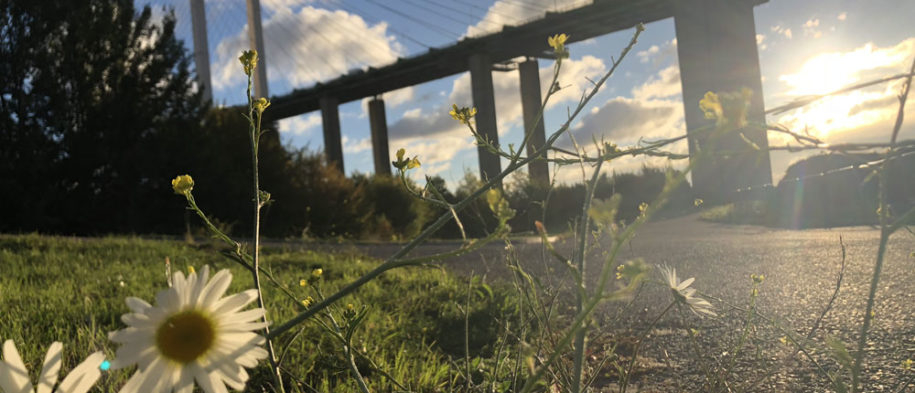
Connect Plus aim to support Highways England and Natural England’s aim of bringing Titsey Woods SSSI into a ‘Favourable’ condition.
This requires the area to be adequately conserved and meeting all targets.
Connect Plus / Case studies
Network Biodiversty
Executive Summary
A part of the Titsey Woods, a Site of Special Scientific Interest (SSSI), falls within Highways England’s Adjacent Land Areas. Connect Plus and Connect Plus Services are committed to supporting Highways England in delivering better environmental outcomes, by providing vital improvements to the woodlands, which include creating a favourable habitat for the population of dormice known to live there.
The Need
Highways England's Biodiversity Plan provides the principal means for identifying and prioritising interventions to improve biodiversity. Key areas of focus are defined in the Biodiversity Plan, and include the following initiatives that can be supported through the Environment Designated Fund:
Special Sites of Scientific Interest (SSSI):
Support better and more resilient places for nature by contributing to the SSSI or core area of high nature conservation value, which contain rare or important habitats or ecosystem services. This includes increasing the number of SSSIs in favourable condition. There are around 70 SSSIs which are either within, or immediately adjacent to, Highways England landholdings.
Maximising habitat connectivity:
Enabling species to move between core wildlife areas, by reconnecting habitats and ecosystems to deliver restoration and connection on a significant (landscape) scale.
Aims & Objectives
Currently, part of the Titsey Woods SSSI falls within Highways England’s Adjacent Land Areas. The condition of the area is currently described by Natural England as ‘Unfavourable recovering’.
Connect Plus and Connect Plus Services aim to support Highways England and Natural England’s aim of bringing Titsey Woods SSSI into a ‘Favourable’ condition. This requires the area to be adequately conserved and meeting all targets.
Traditional routine maintenance in woodland does not consider the ecological linkages, particularly for dormice, and the current wet-woodland is becoming dominated by coloniser tree species. While bramble provides a food source, its uncontrolled growth smothers traditional ground flora.
Solution
The SSSI is designated as an example of wet semi-natural woodland with rare and notable ground flora, supporting uncommon butterflies and moths.
The site is known to contain populations of dormice, a European protected species. Therefore, vegetation management was specifically focused around opening glades, removing coloniser species and creating a habitable environment for them.
This included:
• The removal of different species of ash
• Removing large bramble stands
• Planting additional hazel
• The re-introduction of coppice regimes
Together, this will help create glades, diversify the canopy and create connectivity corridors throughout the woodland, as well as increasing the number of food sources.

Plan and Progress
As woodland matures, coloniser species invade and coppice regimes are lost, traditional dormice habitats decline, and ground layer flora is reduced, which consequently reduces vital glades and open patches required by butterflies.
The project in Titsey Woods works towards improving environments by recreating those linkages. Instilling coppice management and removing some of the coloniser species will to help re-establish favourable ground conditions for notable ground flora and support for dormice.
Measuring Success
Under the leadership of an ecological supervisor, Connect Plus Services were able to successfully complete the main works in FY19-20.
This allowed Highways England to successfully claim their KPI for 2019-20. Aftercare works will continue over the next three years to ensure a successful outcome.
As the works are mainly vegetation management, they will take time to establish and, therefore, little immediate effect will be seen. However, over time (circa 3 years), the scheme will start producing benefits as the new hazel starts to fruit and the light re-establishes the ground layer flora.
Next Steps
The woodland will take many years to fully create and establish the ground flora, partly through natural re-seeding and aftercare management. Aftercare will consist of cutting back invasive plants, ensuring that the planted trees survive - or replacing those that do not – and herbicide spot treatment if required.
Following three years of vegetation management, the expectation is that Highways England will fund and implement sufficient works to continue the woodland improvements within their lands. This should contribute long-term to improving the current ‘unfavourable’ status.
Additional works have been identified at other SSSI’s, however, this is subject to funding of a detailed design stage, by Highways England.
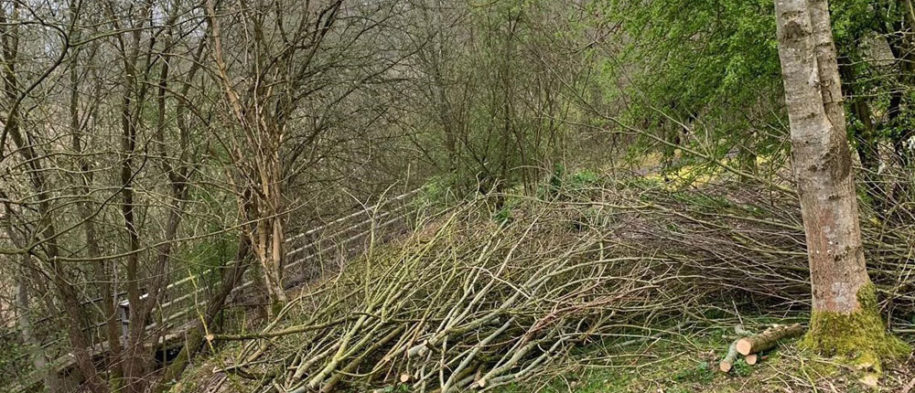
Protecting the Surrey Iron Railway - a registered ancient scheduled monument - through woodland management
Connect Plus / Case studies
Cultural Heritage
Executive Summary
The Surrey Iron Railway is a registered ancient scheduled monument (Historic England), lying within the ownership boundary of Highways England.
https://historicengland.org.uk/listing/the-list/list-entry/1005932
The remaining earthworks are being damaged by tree colonisation across the area. Trees damage earthworks by potentially breaking off embankment walls and obscuring the structure, therefore, a proposal was created by Connect Plus Services to cut and remove the trees along the rail earthwork structure, and kill the roots rather than digging them out.
The Need
In the Environmental Designated Fund (EDF) Plan, the aim of the Cultural Heritage section is stated as ‘Reducing the impact of the network on the historic environment and to conserve and enhance the setting (and condition) of cultural heritage and historic features either within Highways England ownership or in proximity to the Strategic Road Network.
Aims & Objectives
The aim of this scheme was to protect the railway earthwork structure of the scheduled monument, which lies within Highways England’s land.
The scheme required the cutting down and removal of self-set trees along the line of earthworks, while poisoning the roots to reduce the potential for regrowth from the coppiced stumps.
Solution
We removed the trees from along the line of the scheduled monument. We then poisoned the stumps which will reduce the potential for regrowth.
These works have now been successfully carried out.

Plan and Progress
Highways England EDF Plan – Cultural Heritage Annex F, is the larger plan and guidance to reduce the impact of the network on the historic environment.
These works fall under that plan and we’re proud to have worked in partnership with Highways England to protect another scheduled monument from vegetation damage.
Measuring Success
We carried out and completed the works successfully and without any issues. The vegetation we removed from the railway line was recycled and used within the adjacent woodland areas as biodiversity habitat piles.
Feedback
The completion allowed Highways England to successfully claim their KPI for 2019-20.
Next Steps
The woodland will take many years to fully create and establish the ground flora, partly through natural re-seeding and aftercare management. Aftercare will consist of cutting back invasive plants, ensuring that the planted trees survive - or replacing those that do not – and herbicide spot treatment if required.
The project has concluded, however, follow-up visits may be required in the coming years for spot-treatment of any re-growth or any new self-set plants.

Connect Plus and Connect Plus Services are supporting Highways England’s objective of converting 3,500 hectares of open grassland to species rich grassland.
Connect Plus / Case studies
Species Rich Grassland
Executive Summary
Connect Plus and Connect Plus Services are working in partnership with Highways England to develop better environmental outcomes, specifically to meet their aim of converting 3,500 hectares of land from open grassland to species rich grassland.
The Need
We have a duty to the generations to come, to preserve an environment we are proud of. We are committed to working in a sustainable way, alongside our in-house experts, to ensure we are always sympathetic to our surroundings and are protecting local habitats.
Part of this commitment is about enabling species to move between core wildlife areas, by reconnecting habitats and ecosystems to deliver restoration and connection on a significant scale.
Aims & Objectives
Highways England's target for the M25 network is 71 hectares and this year (2019) we achieved over 10% of that target. In 2019-2020, we’re expecting to achieve 10-15% with a further 15%-25% a possibility in the following year. The ultimate outcome should be an enhanced environment for pollinators and increased habitat connectivity.
Solution
In June 2018 Highways England requested our help in converting open grassland to species rich grassland, within a relatively short time frame.
We agreed upon a solution that would delay the in-process study schemes and in doing so allow us to refocus and rapidly survey the existing open grassland. In addition, we would create a bespoke local plant mix, based upon soil type and area characteristics.
A fast-track design and delivery was agreed with Highways England to simplify the design process. With the milder weather, we were able to deliver most of the plots during October 2018, with the balance delivered in March 2019.
The works included removing unwanted vegetation, cutting back the existing grassland and encroaching scrub, scarifying the top surface and distributing the species-rich seed mixture.
The following 3 years of aftercare will include a further re-seed with annual cuts. This will be followed by an annual Operations and Maintenance 'cut and collect' to reduce the fertility of the plot, as low fertility promotes the the growth of wildflowers.

Plan and Progress
We are continuing to work closely with Highways England to help them reach their target of converting 3,500 hectares, with a planned 71 hectares to be delivered on the M25.
Measuring Success
Additional conversion areas were identified during the survey walk-overs and these are likely to be converted in future schemes.
KPIs have been applied to FY19-20 schemes.
Feedback
Feedback from Highways England has been positive, and the local bee conservation specialist has indicated that the works could have a positive benefit to a rare carder bee species, which can currently only be found in two locations.
Next Steps
The grassland will take around two years to achieve maturity and full flowering following reseeding in May 2019. A further three years of late summer cutting will see further improvement.
We’ll take a survey of grassland species on the third year of aftercare and make comparisons between the previous and new grasslands.

The energy saved through our ‘Part Night Lighting’ and ‘Full Switch Off’ initiatives is enough to power approximately 8,227 homes, which is the equivalent to a town the size of Sevenoaks.
Connect Plus / Case studies
Lighting Scheme
Executive Summary
In order to reduce our CO2 footprint and to support the UK Government’s plan to reduce energy use, we have implemented Part Night Lighting and Full Switch Offs at various sites around the M25 network.
The Need
Research shows that only about a fifth of England now has ‘pristine night skies’, which are skies completely free from light pollution. By minimising the carbon footprint of the strategic road network (SRN), and the light pollution emitted, we can support Highways England in reducing the environmental impact of the M25 project.
Aims & Objectives
The roll out of this strategy relates to the UK Government’s commitment to the United Nations Framework Convention on Climate Control.
Working together with Highways England, we can support this commitment by helping to reduce carbon emissions and light pollution through the introduction of full lighting switch offs in various locations around the M25 network.
By implementing full and part night lighting switch offs, we can also improve local habitats. For example, for bats, artificial lighting is thought to increase the chances of predation and therefore bats may modify their behaviour to respond to this threat.
Solution
Careful safety assessments were carried out across the M25 network to identify sites that would see the part night lighting and full switch off scheme rolled out.Highways England’s Traffic Officer Service and Regional Control Centres were consulted on the proposed strategy. We also engaged with the ‘Blue light’ Emergency Services.
The Part Night Lighting scheme will see the lights operating as per evening standard each night, with the lighting switched off at 00:00hrs and switched back on at 5am (dependent on the ambient lighting levels).
The lighting is controlled by a Central Management System, which allows our Network Operations Centre (NOC) to turn the lights back on should it be required for an incident or for maintenance.
The Full Switch Off scheme has now seen the lighting switched off.

Plan and Progress
Full Switch Offs have been undertaken across Highways England’s network since 2008. Locations where this has already been implemented on the M25 DBFO network include the M25 between junctions 23 – 27, M3 junction 2, M3 junction 1 and the A2.
Part Night Lighting was originally called Mid Night Switch Off and has been implemented around Highways England’s network since 2009.
70% of Highways England’s network is now unlit.
Progressing this strategy will support the achievement of future carbon budgets and the UK’s 2050 target to reduce emissions by at least 80% of 1990 levels.
Feedback
Feedback was received from a local resident in relation to the lighting switch off as follows:
“Dear Highways, The motorway lights being switched of at night is very nice with no light pollution on the surrounding area. All the residents have commented on how much nicer it is. A huge thank you. Great job.”
Next Steps
We will continue to support Highways England in its drive to achieve its environmental strategic outcomes.
